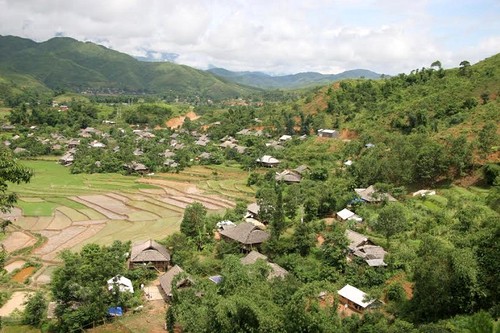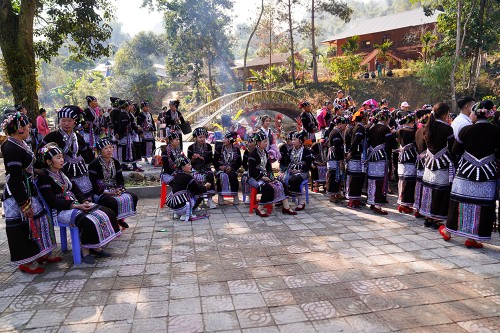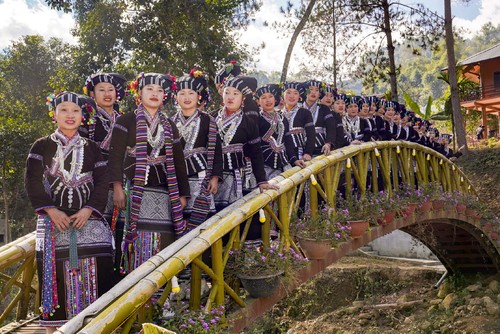 Ban Hon commune retains much of its pristine beauty. (Photo: VOV) Ban Hon commune retains much of its pristine beauty. (Photo: VOV)
|
Five years ago, Vang Van Phat’s family was one of the poorest in Tham hamlet. The 5-member family grew a single crop on terraced fields and was dependent on trips to the forest by Phat and his wife.
Since Phat restructured his crops and livestock and started participating in community tourism in line with Party and State direction and local policy, his family has become well-off.
He told VOV that the lives of his family and other villagers used to be characterized by no roads, no electricity, no clean water, and multiple outdated customs. The local administration showed them how to grow wet rice and use technology and intensive farming to improve crop productivity. Since they started doing community tourism, their lives have gotten easier.
Phat recalled, “In the past, it was difficult to travel on the unpaved roads. We lived in thatched houses. But it's better now. We grew few agricultural products and their quality was poor. Now I know how to take care of crops. The farm work is easier and my income is higher. Villagers who do community tourism make a very good living. They’re happier. Children are better educated and there are no more children dropping out of school.”
Five years ago, all 200 Lu ethnic people in Tham hamlet were poor, said Lo Van On, a village official.
“All Lu households now engage in culture and community tourism activities. Village leaders set the example and persuaded the others to do tourism. As a result, their living conditions have improved,” said On.
 Ban Hon commune in Tam Duong district is home to Lu ethnic people. (Photo: VOV) Ban Hon commune in Tam Duong district is home to Lu ethnic people. (Photo: VOV)
|
Ban Hon commune in Tam Duong district has 8 hamlets with 600 households of 2,800 people. 90% of them are Lu. The local government has persuaded them to expand their wet rice cultivation and restructure their crops and livestock. The commune has 550 hectares of rice, 500 hectares of tea, macadamia, cardamom, and fruit trees, and more than 1,500 cattle.
Lo Van Giot, Deputy Chairman of Ban Hon commune’s People's Committee, said that in recent years the commune has been combining agriculture with tourism.
The model has been adopted by 4 hamlets, where 20 households run homestay businesses. For the sake of the tourists, traditional rituals and crafts have been restored and preserved. This has enabled many families to escape poverty and become comfortable. The commune's poverty rate was just 25% this year.
 The community tourism movement is strongly developing among the Lu ethnic minority area, giving them a prosperous life. (Photo: VOV) The community tourism movement is strongly developing among the Lu ethnic minority area, giving them a prosperous life. (Photo: VOV) |
Giot said the Lu have abandoned outdated customs and practices.
“We only maintain those customs and practices that create our cultural identity, such as our traditional costumes. The commune's direction is to continue to develop commodity production and create high-quality branded products. Improved transportation has made trading and traveling easier,” said Giot.
The section of the Noi Bai-Lao Cai highway running through the Lu hamlets is gradually taking shape. New crops, new houses, and newly paved roads are clear evidence that the lives of the Lu people are becoming more prosperous.